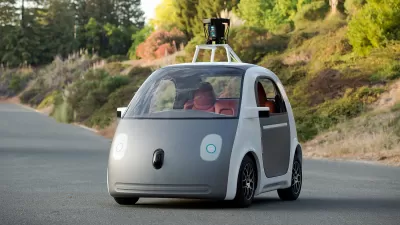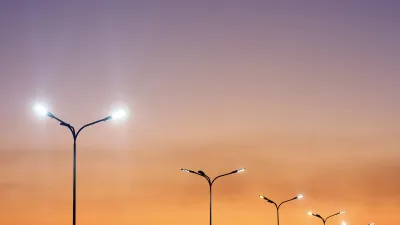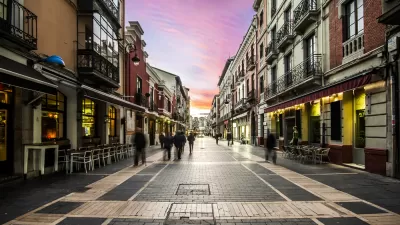Self-driving cars process a tremendous amount of data to pilot themselves through crowded streets. That computing power needs electricity, and lots of it.

Different modes of transportation pose different engineering problems. One such engineering problem tis how much power self-driving cars use. In the old days, self-driving cars needed extra space and power to hold the computers and monitors they carried. "Today's self-drivers don't need extra engines, but they still use terrific amounts of power to run their onboard sensors and do all the calculations needed to analyze the world and make driving decisions," Jack Stewart reports in Wired.
Why does this matter? Besides using electricity, which can come from sources that release carbon and air pollution, it can also limit the range of vehicles. It's an issue many are looking to tackle. "At CES last month, Nvidia put the spotlight on a new processor designed specifically for autonomous vehicles, called Xavier. It has an eight-core CPU and 512-core GPU, a deep learning accelerator, computer vision accelerators, and 8K video processors," Stewart reports. But even this powerful processor is likely not enough to run a fully autonomous vehicle.
If processors don't become more efficient, they will have another problem beyond limited range: the vehicles could become hot. "That heat is wasted energy, and it’s also not something you want in your car on a hot day. Some robocar prototypes need water-cooling with hoses and radiators, which eat up even more space," Stewart writes.
FULL STORY: Self-Driving Cars Use Crazy Amounts of Power, And It's Becoming A Problem

Planetizen Federal Action Tracker
A weekly monitor of how Trump’s orders and actions are impacting planners and planning in America.

The Simple Legislative Tool Transforming Vacant Downtowns
In California, Michigan and Georgia, an easy win is bringing dollars — and delight — back to city centers.

San Francisco's School District Spent $105M To Build Affordable Housing for Teachers — And That's Just the Beginning
SFUSD joins a growing list of school districts using their land holdings to address housing affordability challenges faced by their own employees.

In More Metros Than You’d Think, Suburbs are Now More Expensive Than the City
If you're moving to the burbs to save on square footage, data shows you should think again.

The States Losing Rural Delivery Rooms at an Alarming Pace
In some states, as few as 9% of rural hospitals still deliver babies. As a result, rising pre-term births, no adequate pre-term care and "harrowing" close calls are a growing reality.

The Small South Asian Republic Going all in on EVs
Thanks to one simple policy change less than five years ago, 65% of new cars in this Himalayan country are now electric.
Urban Design for Planners 1: Software Tools
This six-course series explores essential urban design concepts using open source software and equips planners with the tools they need to participate fully in the urban design process.
Planning for Universal Design
Learn the tools for implementing Universal Design in planning regulations.
Smith Gee Studio
City of Charlotte
City of Camden Redevelopment Agency
City of Astoria
Transportation Research & Education Center (TREC) at Portland State University
US High Speed Rail Association
City of Camden Redevelopment Agency
Municipality of Princeton (NJ)





























